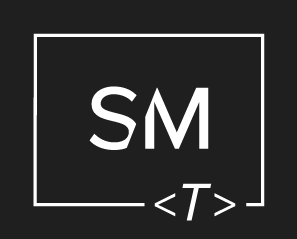Podcasting is on the rise. Last year an annual survey done by Edison Research and Triton Digital revealed that in 2019 40% of people ages 12 to 24 listen to podcasts monthly, a 10% increase from 2018. Beyond the statistics, it has become hard to ignore podcasting’s advance. Most major streaming platforms have added podcasts to their databases, and major news networks have begun to produce them. For college students, creating a podcast is not only a way to explore interests, but can allow connection with a broader audience as consumption of digital audio continues to grow.
Sourcing equipment, audio editing, and distribution can make starting a podcast an intimidating process to embark on! Knowing this, we have created a four-step guide covering podcast planning essentials, a breakdown of equipment you might need, an introduction to audio, and distribution services that you can use.
Topic
All podcasts begin with an idea. When thinking about starting a podcast, it is essential to choose a topic you are passionate about. This topic could be broad, like international politics, or it could be more focused, like visual artists in your neighborhood or city.
An excellent place to start when choosing a topic is thinking about what activities you LOVE to do, or the things that you could spend hours going down an internet rabbit hole researching. Your topic should be something you are willing to spend a substantial amount of time working with!
Format
After choosing a topic, the next thing you’ll want to decide is your podcast format. Your format will influence how much equipment and time for editing you will need. Because of this, you will want to take your budget and schedule for the podcast into consideration.
There are two levels of formatting. The base-level decides your involvement as a host during episodes. Here are some pros and cons of two base formats you can choose from.
Solo Cast
Some podcasts feature just the host, or hosts, talking on each episode. These have been coined solo casts.
The pros:
- You can create episodes purely on your own time; you don’t have to set up interviews or rely on other people
- Episodes are extremely customizable
The cons:
- You are on your own for content; it can be hard to speak on something by yourself for 30 to 50 minutes
Some great examples of solo casts are: Hardcore History, The Tim Ferriss Show
Interview-Based
Other podcasts feature live interviews with guests or insert pre-recorded interviews during the editing process.
The pros:
- You can offer a range of perspective when you include guests
- You won’t have to speak the whole time
The cons:
- You have to set up meeting times with guests
- Can require more equipment
Some great examples of interview-based podcasts are: This American Life, Song Exploder
Once you have decided on your base level, you can now look into the secondary level of formatting, which decides the structure during episodes. Here are some pros and cons of the two secondary formats you can choose from.
Conversational
The main idea with a conversational podcast is that the episodes are created using normal conversation. There isn’t a defined script, and the episodes follow where the conversation leads.
The pros:
- Extensive planning isn’t involved
- There is a lot of flexibility when recording. If you or a guest thinks of something new during the conversation, it is included in the episode.
The cons:
- It can be hard to stay on track, which could lead to a lot of editing
- You might have to think of ideas on the fly to keep your audience engaged.
Some great examples of what a conversational podcast could look like are: Fresh Air, Stuff You Should Know
Scripted
Scripted podcasts are the opposite of conversational podcasts. They utilize a script during places where the host is talking. This format is commonly used when the podcast relies on pre-recorded interviews. However, it can be used in conjunction with other formats as well! This format is also ideal for literary or performance-based podcasts, where stories are told!
The pros:
- Scripts make a podcast sound clean; filler words are usually omitted
- You’ll have a good idea how much material you will be recording before you sit down and record
The cons:
- It takes a lot of time to write and develop a script, but this doesn’t apply if you’re reading a play or a book in your episodes.
- Not all topics work well with a script. For instance, a podcast where different ideas are debated might be suited best by a conversational format.
Some great examples of what a scripted podcast could look like are: A Very Fatal Murder, Welcome to Night Vale, Pheobe Reads a Mystery
Your format choice will depend on where you envision your podcast going, how much time you have to dedicate to the process, and how many resources you have access too. If you’re not ready to commit to a specific format, you always have the option to combine them or have special episodes utilize a different format. The possibilities are endless!
Once you have picked your topic and format, you are ready to move on to gathering the equipment that will make the most sense for your podcast. Part two of this guide will take you through the different equipment you might want to consider when starting!





Leave a Comment